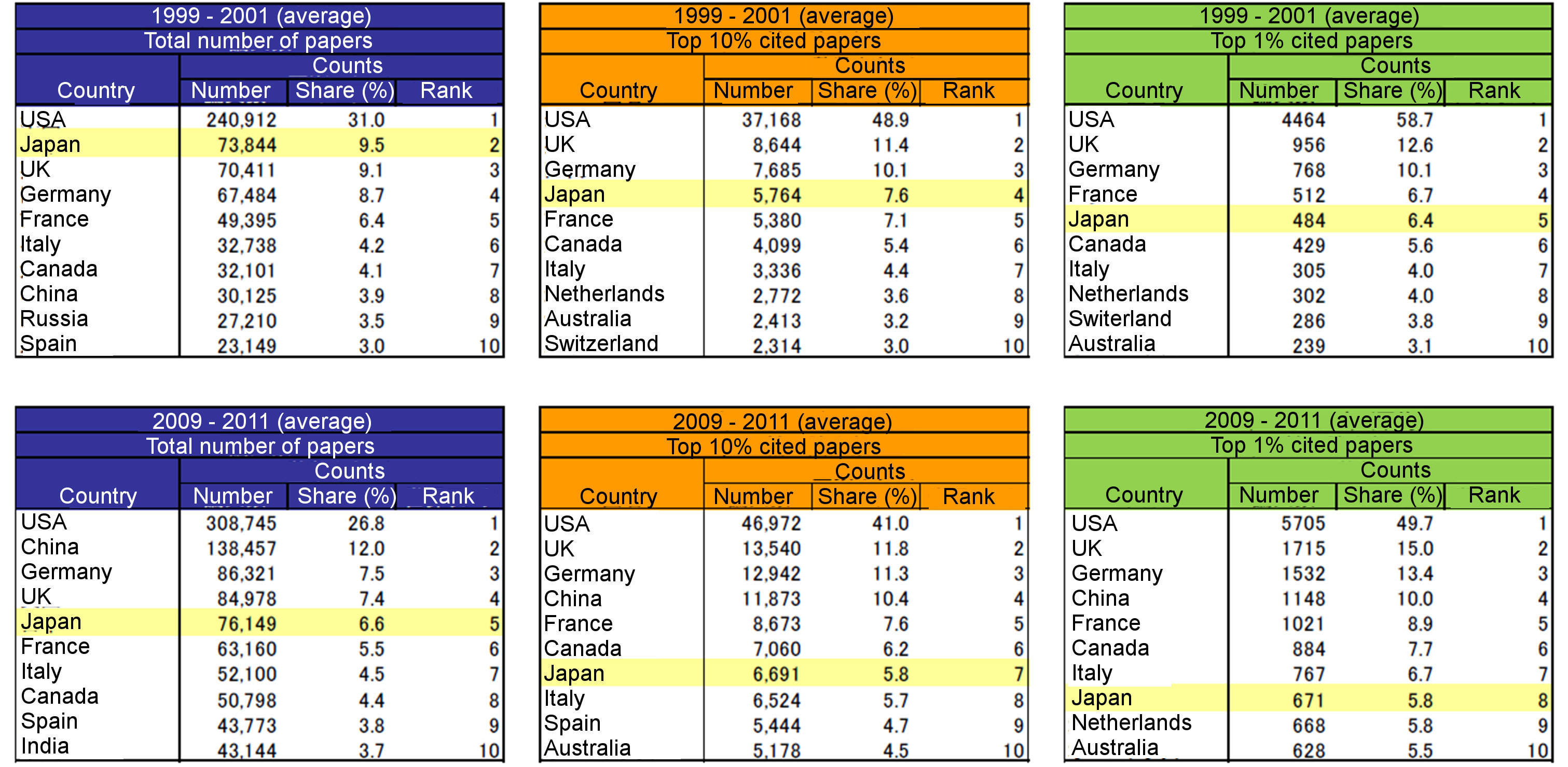Japan's research landscape and the need for internationalization
Global science
Science is global and growing at an immense pace. This series provides an overview of the status of science and research around the world, in terms of R&D expenditure, citation metrics, collaboration, and internationalization.

How is Japan placed on the global research atlas?
Over the past few decades, the global scientific research and publication arena has witnessed several developments that have changed the way science is disseminated and evaluated. Trends such as open access, collaborative research, and international funding have made it possible for countries to capitalize on their investments in research and development (R&D) and yield rich returns. Japan is one of the countries with the highest share of GDP for R&D. For example, its R&D share was almost 3.8% in Japanese FY2013. The ratio of researchers in the Japanese population is also among the highest in the world. In addition, Japan has a very innovative industrial market. As the distribution graph in Figure 1 below shows, Japan has the highest share of R&D investment in the world.

[Figure 1] [Japan leads on both Gross domestic Expenditure on Research and Development (GERD) and number of researchers in the active population.]
Source: UNU-MERIT based on data from the UNESCO Institute for Statistics and World Bank
In light of these positive figures, it would seem natural to consider that research in Japan is flourishing. However, the truth is that Japan’s success in R&D is not proportional to its efforts.
In recent years, there has been a decrease in publications from Japan, and its share of most cited publications has also diminished. While the dip may have been due to the rise of new players such as China, it still does not explain why Japan has not been able to stand its ground in face of the changes in the scientific research and publication sphere, as have done many European countries, for example.

[Figure 2] [Translated from the original Japanese paper: Number, share, and ranking of the world’s top 10 countries in the number of publications (left column), top 10% cited publications (center column), and top 1% cited publications (right column) in 1999-2001 (top row) and 2009-2011 (bottom row).]
Source: Saka, A., & Kuwahara, T. (2012). “Benchmarking scientific research 2012—Bibliometric analysis on dynamic alteration of research activity in the world and Japan”
The numbers in Figure 2 clearly indicate the domination of the USA and the rise of China and India in terms of global research publication output. We also see that a number of European countries have been able to retain or even improve their share, while Japan’s contribution is decreasing. The question that then arises is why is Japan’s research output diminishing?
Read the next part of this post to know more about why Japan's research output is diminishing.
Published on: Jun 23, 2015
Comments
You're looking to give wings to your academic career and publication journey. We like that!
Why don't we give you complete access! Create a free account and get unlimited access to all resources & a vibrant researcher community.



























